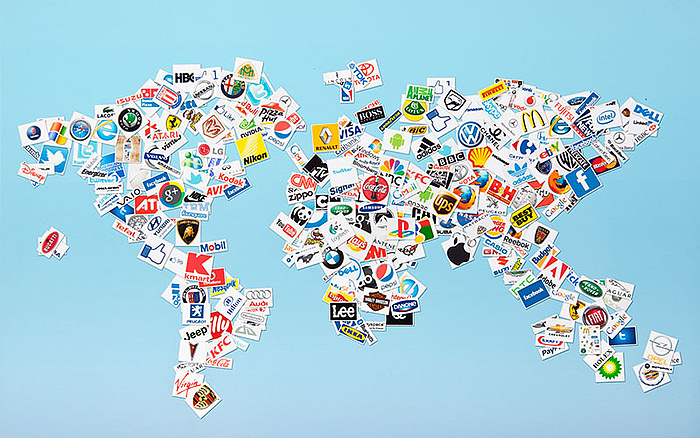
What can be trademarked — and what cannot?
At first glance, the topic of trademark eligibility seems obvious: Only business and product names can be trademarked. But the reality is a lot more complex. Knowing exactly what Intellectual Property (IP) can be protected with a trademark is pivotal for any creator or organization seeking to promote and defend their brand identity.
The power of a strong trademark cannot be overstated. The right mark, be it the iconic three-point insignia of Mercedes-Benz or Nike's eye-catching "swoosh," can forge a lasting emotional connection between brand and customer.
If you are considering turning your branding elements into registered trademarks, it will be extremely valuable to refresh your memory as to exactly which IP assets qualify for such protection. As is so often the case in such matters, it is important to be particularly mindful of the differences in law between jurisdictions.
What can be trademarked?
A trademark (or service mark) serves to identify a brand in conjunction with one or more of the goods or services it offers. Logos, words (including product or service names), slogans, letters, abbreviations, numbers, multimedia signage, packaging designs, sounds and even smells can all be trademarked – so long as they meet the relevant jurisdictional criteria for eligibility.

Crucially, a scent is only eligible for trademark protection if it does not serve a practical function in a good or service. This is why the smell of a perfume or air freshener cannot be trademarked – it is an integral component of the product rather than an identifier of it.
While the specifics of law will vary from location to location, the following are very common conditions that need to be fulfilled for a trademark to be registered:
-
The mark should be distinctive and original in order to distinguish commercial origin. For product or company names, it is often preferable that they are either suggestive or arbitrary. Suggestive marks hint at a product without explicitly defining it, e.g., "AIRBUS," while arbitrary marks are totally unrelated to the deliverables in question, e.g., "MARS" for food.
-
The mark must apply specifically to one or more products or services, as detailed in the trademark application you submit.
What cannot be trademarked?
Just because an asset can be protected by a copyright or patent does not mean it cannot also be trademarked. IP rights are not mutually exclusive and can overlap so long as the subject matter satisfies their various eligibility criteria. However, the different forms of IP have own objectives, and so cumulating trademarks with other forms of IP rights would be something of a redundancy for most – but not all – businesses.
As for a logo, product name or other asset that, in a vacuum, has the potential to become a trademark, there are still some provisions that could prevent it from being registered:
-
Descriptiveness / lack of distinctiveness: Terms that literally describe items as they are ("tomato," "beer," "copper" or any other common word) cannot be trademarked as they must be reserved for general use. Similarly, marks that fail to indicate a particular commercial enterprise to consumers will not be registered.
-
Likelihood of confusion: If your unregistered trademark is similar enough to a registered mark currently being used to represent the same goods or services you provide, it cannot be registered. However, an unregistered mark associated with entirely different products from a similar registered mark would not be rejected out of hand, although an examiner might still view this negatively.
-
Use of official government imagery: Words, names or imagery directly associated with a government – or, in the EU's case, a coalition of states – cannot be trademarked.
-
Deceptiveness: A mark that could create consumer confusion, unfair competition or mislead the public can never be registered as a trademark.
-
Vulgarity or profanity: Terms or visuals viewed by the general public as obscene or offensive, as well as those that would deliberately insult specific groups of people, are typically excluded from trademark registration. Signs that are contrary to the public order – such as those that promote recreational drug use – are also prohibited.
It is generally difficult in many jurisdictions to obtain trademark rights to full proper names. However, surnames can sometimes be registered in cases of long-established brand significance and secondary meaning, like Disney, Ford or Chanel.
Notable jurisdictional variances
The precise answer to what can and cannot be trademarked may also depend on where you are attempting to register a trademark. For the most part, the standards described above hold true in the vast majority of locales, but it is always essential to be familiar with the specifics of the law for every jurisdiction in which you seek trademark protection.

Expert knowledge of local laws is indispensable when filing for protection in multiple territories. Success or failure in one jurisdiction does not guarantee the same outcome in another.
Here are some of the more interesting regional distinctions related to trademarks:
-
In the United States, a June 2019 Supreme Court decision threw the standard that "offensive" words could not be trademarked into question. The Court ruled that a bar to registration that "discriminates on the basis of viewpoint" collides with the First Amendment's protection of free speech. Thus, the name of the clothing company FUCT could not be denied registration by the United States Patent and Trademark Office (USPTO) on the grounds of it being "immoral and scandalous." This puts the country at odds with most other nations.
-
Although you are not mandated to put a trademark to immediate commercial use to ensure its registration, many countries will require you to state in your application whether you will or will not be using it in current commerce. The European Union Intellectual Property Office (EUIPO) does not ask this question and will register a mark that is not immediately used in trade. However, if it is not used within five years, the proprietor's rights could be revoked.
-
Most nations offer enhanced protections to trademarks that can reasonably be considered "well known," even if they are unregistered. That said, it is always wisest to seek registration, as it takes quite some time for a trademark to be able to satisfy this condition.
-
Although the United States will only consider them under particular circumstances, France and quite a few other EU states have opened up unconventional marks such as holograms to trademark protection.
Of course, there are plenty more variances where those came from. As previously stated, comprehensive regional knowledge is key.
Strengthening your brand
If you wish to protect your marks in Europe, you can apply for a national or EU trademark (EUTM) registration or opt for both. It is worth noting that national trademarks in EU member states are less likely to be refused registration compared to EUTM applications. As such, it may be prudent to apply for a national trademark first and then submit a bid for an EUTM. You can further supplement your protections by entering the Madrid System offered by the World Intellectual Property Organization (WIPO).
After registration, maintenance becomes the priority, and an experienced trademark lawyer is essential in this regard. Here is where the experts at Dennemeyer can be especially helpful, ensuring that renewal dates are not missed and any periodic trademark filing requirements are met. Our team will employ decades of expertise to register your trademarks and protect them from infringement and the other perils of the IP world.
Filed in

What are the three pillars of IP innovation, and how can C-suite members maximize the value of assets that are, by definition, less than concrete?



